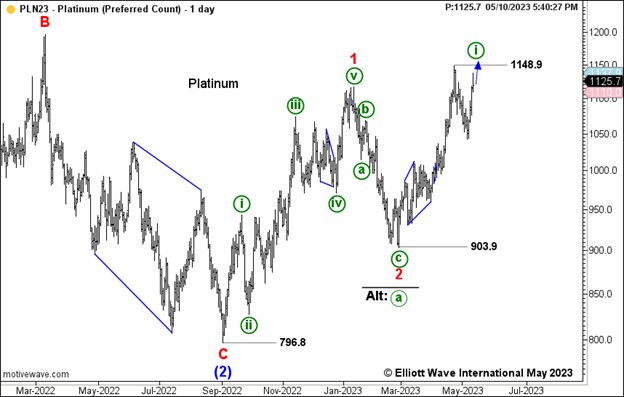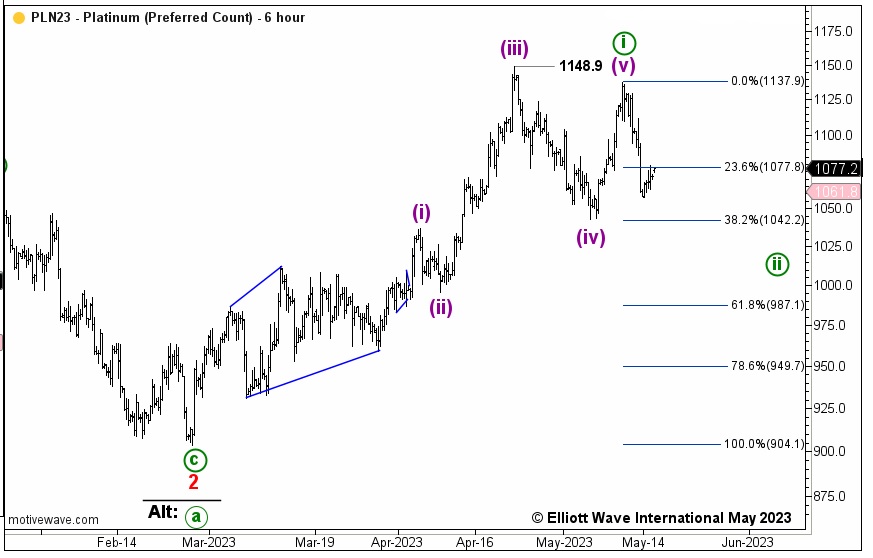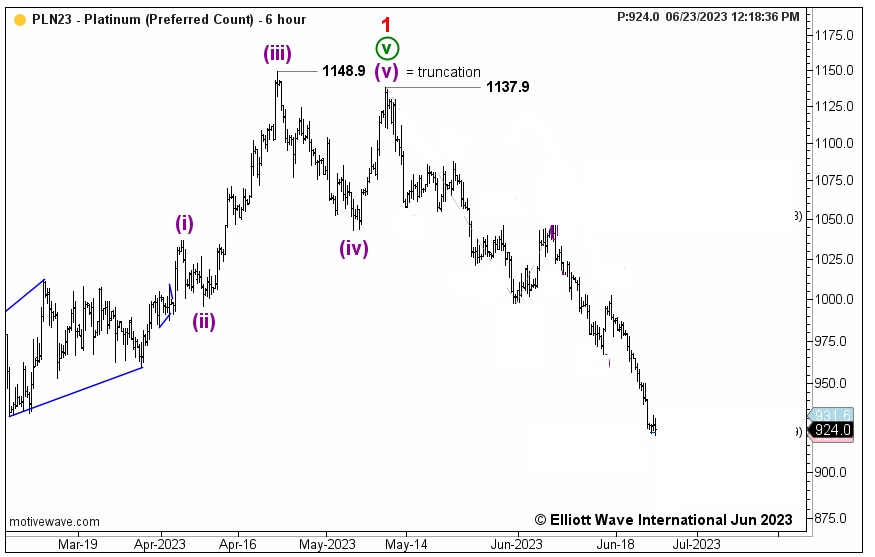Platinum’s May-June Selloff: When the “Fundamental” Chips Fall
In May, a “record supply deficit” should’ve sent platinum prices soaring. So much for the best laid “fundamental” plans.
If I had a nickel for every time someone asked me what value “fundamentals” serve in navigating financial markets, well… let’s just say I could’ve retired to the Poconos years ago.
And the short answer I give to this question hasn’t changed in 18 years; namely, none.
This can be hard to accept, considering how fundamental “fundamental” market analysis is for mainstream finance. Pick the equivalent “Wall Street” of the country you live in, ask any pundit on that particular “street,” and they’ll insist the main driver of market trends is the news circulating outside those markets. That includes anything from weather patterns, political unrest, earnings reports, and so on.
But the reason I and we as Elliott wave analysts take such a radical stance against the value of “fundamentals” is simple: These news events don’t occur in a vacuum. They’re filtered through the lens of human beings, and very rarely do those humans see eye-to-eye on what a certain event means for a market’s future.
Or whenever there is a consensus on how a certain event will affect prices, the market goes ahead and does the exact opposite of that consensus.
When you start paying attention to this pattern of markets ignoring the news that’s supposed to move them, you can’t un-see it.
What we as Elliott wave analysts do see, however, is that market trends are driven by investor psychology, which unfolds as measurable wave patterns directly on price charts.
A recent example of this comes from platinum. In May, the industrial metal used in everything from catalytic converters to AI medical technology made the front page of major news outlets from The New York Times to Fortune Magazine.
The word “platinum” was practically clickbait, after the Biden administration floated a long-held and longshot Hail Mary idea for the U.S. Treasury to mint a $1 trillion platinum coin to avert the crashing of the debt ceiling.
At the same time on the investment front, platinum bulls were handed the big blue whale of supportive “fundamentals” — not just low supply numbers amidst rising demand, but the lowest supply data on record care of rolling power outages in South Africa, the world’s largest supplier of mined platinum.
The white metal seemed to be prime for a red-hot rally. Wrote Reuters on May 2: “Platinum prices surge as speculators bet supply will run short… We think this is the first year of serial deficits in the platinum market.”
On May 16, Bullion Vault added: “Platinum Investment to Support $1000 Price on ‘Record Deficit.'”
“Fundamental” signs pointed in a straight line going up. Elliott wave signs, however, aimed to help investors and traders manage the risk of participating in the metal’s action.
On May 11, our Metals Pro Service showed this Elliott wave labeled price chart of platinum. There, our primary count was bullish, and called for “a new high.” But that wasn’t the end of our analysis. We then explained the exact steps price must take to confirm an uptrend. From Metals Pro Service:
“You would think it would’ve given us a new high, and yet price has fallen back to the low it achieved just hours ago. I’m going to stay bullish above the .382 retracement level. I’m not eager to call a top, but if it goes under the .382 retracement level of 1150, then the risk begins to become that a top is in place. I am inclined to call it a truncated fifth wave of wave 1 up.

The next day on May 12, platinum accelerated down, confirming that a truncated fifth wave top was in place. Metals Pro Service showed its newly updated chart and said:
“The outlook is bearish while price holds under its 0.382 retracement level. The farther price falls, the more likely it is that wave (a) of ii (circled) is underway.

And from there, platinum continued falling to a 4-month low on June 23.

Metals trading, as all markets, carries risk. And not all Elliott wave interpretations turn out to be accurate. But like this example shows, Elliott analysis does identify critical price levels to help manage the inherent risk.
“Fundamental” analysis can’t say the same.
The Elliott Wave Hotlist: See 5 top market picks — FREE
70+
That’s how many markets Elliott Wave International’s Pro Services cover for subscribers.
But, you might ask, why the “+”? Why not write the exact number?
Well, because month in and month out, Pro Services also look for special opportunities. Sometimes in markets they cover regularly, sometimes something totally wild and unexpected.
In other words, they go where the opportunity is.
And that’s exactly what you’re about to see.
FREE through July 14, the “Elliott Wave Hotlist” shows you 5 top opportunities straight from the desks of EWI’s Pro Services analysts.